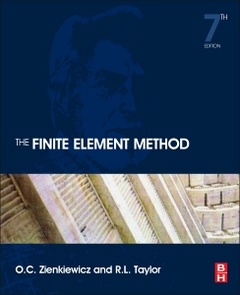Description
The Finite Element Method (7th Ed.)
Authors: Zienkiewicz Olek C, Taylor Robert L.
Language: English
Subjects for The Finite Element Method:
· 19x23.3 cm · Hardback
Out of Print
Description
/li>Contents
/li>Readership
/li>Biography
/li>Comment
/li>
The Finite Element Method Set, 7th Edition is an extensive reference resource covering the theory and application of FEM in solid, structural and fluid systems. Taking in three books also available separately, the set is software independent and covers founding principles alongside the latest developments in mathematics, modeling and analysis.
Mechanical, Civil and Electrical Engineers, applied mathematicians and computer aided engineering software developers
R.L Taylor is Professor of the Graduate School at the Department of Civil and Environmental Engineering, University of California at Berkeley, USA. Awarded the Daniel C. Drucker Medal by the American Society of Mechanical Engineering in 2005, the Gauss-Newton Award and Congress Medal by the International Association for Computational Mechanics in 2002, and the Von Neumann Medal by the US Association for Computational Mechanics in 1999.
- The Finite Element Method: Its Basis and Fundamentals, 7th Edition
- The Finite Element Method for Solid and Structural Mechanics, 7th Edition
- The Finite Element Method for Fluid Dynamics, 7th Edition




